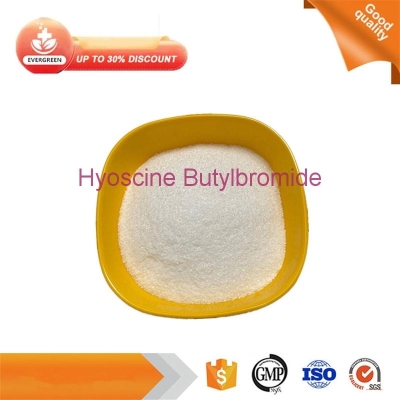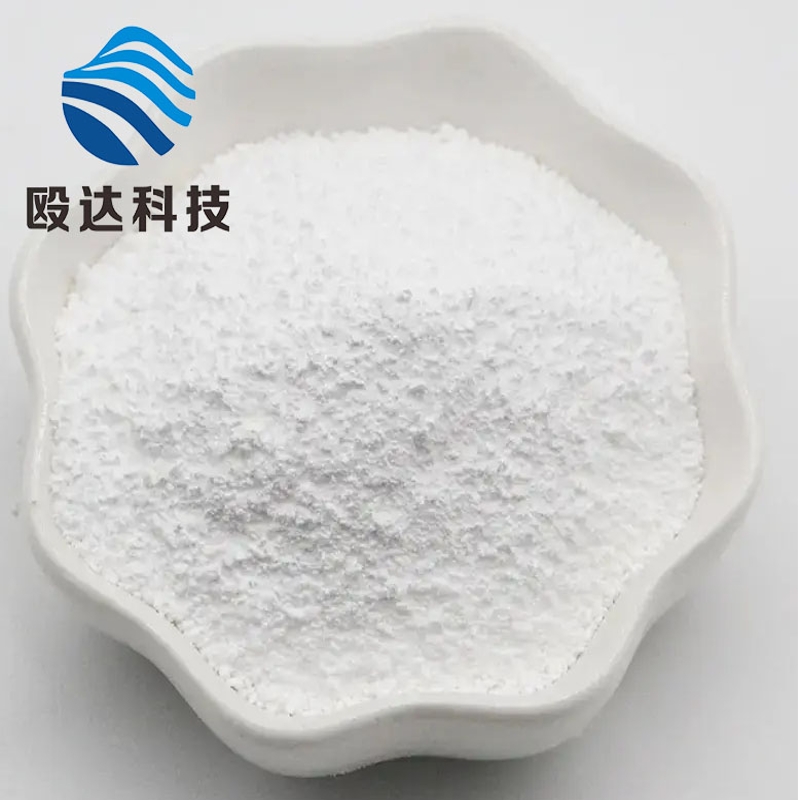-
Categories
-
Pharmaceutical Intermediates
-
Active Pharmaceutical Ingredients
-
Food Additives
- Industrial Coatings
- Agrochemicals
- Dyes and Pigments
- Surfactant
- Flavors and Fragrances
- Chemical Reagents
- Catalyst and Auxiliary
- Natural Products
- Inorganic Chemistry
-
Organic Chemistry
-
Biochemical Engineering
- Analytical Chemistry
- Cosmetic Ingredient
-
Pharmaceutical Intermediates
Promotion
ECHEMI Mall
Wholesale
Weekly Price
Exhibition
News
-
Trade Service
In 1982, Australian doctors Barry Mashall and Robin Warren successfully cultivated Helicobacter pylori; the revolutionary discovery that Helicobacter pylori (Hp) is an important cause of a series of gastrointestinal diseases such as gastritis and gastric ulcers.
At the beginning of 2022, the U.
S.
Department of Health and Human Services released the latest version, the 15th edition of the carcinogen report, adding 8 carcinogens, and H.
pylori was listed as a clear carcinogen
.
The harm of H.
pylori has been obvious to all over the years, and the research in the field of H.
pylori has always been hot.
In this issue, we invite Director Wang Yanying from the Dongfang Hospital Affiliated to Tongji University to share the new progress in the diagnosis and treatment of H.
pylori infection
.
Expert Profile Wang Yanying Chief Physician of the Special Clinic Department of Dongji University Affiliated Oriental Hospital, MD, Master Supervisor Diagnosis and treatment of acute, chronic and critically ill digestive system, especially good at diagnosis and treatment under digestive endoscopy Problem 1: Accurate diagnosis is the premise of effectively dealing with Hp infection.
In terms of Hp detection, please talk about what new developments are worth paying attention to.
progress? Director Wang Yanying: In the past 20 to 30 years, the public health harm caused by
H.
In the detection of Hp, in addition to the currently commonly used detection methods (rapid urease detection, C13 or C14 urea breath test, histological detection and serological detection), there are also some new detection methods, such as new Endoscopy detection methods, molecular biological detection methods and stool antigen detection methods for Hp
.
New endoscopic detection refers to the use of some emerging high-definition endoscopy in recent years, such as near-focus high-definition endoscopy, blue-light imaging endoscopy, linked imaging endoscopy and artificial intelligence AI recognition system, these new endoscopy detection methods.
It provides some new basis for improving the accuracy of Hp diagnosis
.
The advantage of endoscopy is that the specificity is relatively high, but it also has the disadvantage that the sensitivity is relatively low, so it still needs further bacteriological evidence to confirm the infection of H.
pylori
.
In addition, some Hp-infected patients without typical endoscopic morphology are likely to be missed during endoscopic detection, so endoscopic detection needs to be supplemented with other detection methods
.
In addition, molecular biology detection is also a research hotspot at present, that is, the use of molecular biology techniques such as biochip detection, in situ hybridization technology, polymerase chain reaction (PCR), etc.
to non-invasive samples of non-gastric mucosa (such as saliva and feces) for H.
pylori Infection detection
.
The advantages of this detection method are that it is simple and easy to implement, very easy for patients to accept, and has a high clinical application prospect
.
However, the current kits are relatively expensive and lack criteria for evaluation, so it is not a routinely recommended detection method
.
There is also a new type of detection method is the stool antigen test (SAP) of Hp.
SAP is another non-invasive test with high sensitivity and specificity for the diagnosis of Hp.
This method also has a history of nearly ten years.
Recently, The developed Atlas Hp antigen test is a brand-new monoclonal immunochromatographic SAT.
Compared with the previous monoclonal immunochromatography SAT, it has better diagnostic performance.
However, the acceptance of fecal Hp antigen test in adults is currently low.
Possibly more promising at the child level
.
Question 2: Although the current treatment for H.
pylori infection can eliminate the existence of H.
pylori in infected patients, it cannot achieve the effect of eradicating H.
pylori for the whole society.
Therefore, the development of H.
pylori vaccine has always been a hot spot of clinical attention.
Is there any new progress in R&D and listing? Director Wang Yanying: The research and development of H.
pylori vaccine has always been a hot spot of clinical attention.
Regarding the development of H.
pylori vaccine, many attempts have been made in the past 30 years.
However, due to the complexity of its antigen preparation and human immune response, it is still under laboratory development.
stage, not yet suitable for clinical application
.
Therefore, the control of H.
pylori infection still requires the use of antibiotics combined with acid suppressants.
The prevention of H.
pylori should be similar to the preventive measures for infectious diseases.
Interrupt the transmission route of Hp (oral-oral transmission and fecal-oral transmission)
.
Question 3: You just mentioned that antibiotics combined with antacids are the main measures to control H.
pylori infection at present, so please tell us about the new clinical progress in the specific H.
pylori eradication treatment plan? Director Wang Yanying: The fifth national consensus report on the management of Helicobacter pylori infection in China in 2017 clearly proposed 7 different combinations of bismuth quadruple regimens.
The therapeutic effects and tolerance of these regimens have been verified and are the main recommendations in China The H.
pylori eradication program is also a program that can ensure the treatment effect of H.
pylori infection
.
For example, a new drug three-in-one capsule (metronidazole + tetracycline + bismuth subcitrate) combined with a PPI for Hp eradication in recent clinical trials is actually based on a quadruple regimen, and its innovation is that it does not have to be Different dosing schedules are used throughout the day to manage multiple drugs, but there are certain limitations, such as a long course of treatment, the need for multiple dosing a day,
etc.
In addition, there are some other simple optimization schemes in clinical practice, which have shown relatively good eradication effects in some parts of the country
.
At present, under the leadership of the professional committee of the Chinese Society of Gastroenterology, the formed expert committee is formulating a new consensus to summarize the advantages and disadvantages of the past treatment plans, which should be officially released this year
.
Question 4: We know that the failure of the first eradication of H.
pylori will lead to the emergence of drug resistance, so it is particularly important to improve the first eradication rate of H.
pylori
.
So please talk about the specific drug selection in the treatment plan for Hp eradication, what are the new clinical ideas? Director Wang Yanying: The favorable options for the first eradication of H.
pylori are mainly in two aspects
.
On the one hand, it is the choice of antibacterial drugs, and on the other hand, it is the choice of acid-suppressing drugs
.
The selection of antibiotics mainly considers which antibiotics are commonly used by patients, and also needs to understand the antimicrobial resistance in the area where the patients live
.
At present, the resistance rate of H.
pylori to clarithromycin, metronidazole and levofloxacin in China (including multi-drug resistance rate) is on the rise.
Relatively speaking, the resistance rate to amoxicillin, tetracycline and furazolidone is relatively low, so in China Of the seven recommended bismuth quadruple regimens, five contain amoxicillin
.
Amoxicillin has a strong anti-Hp effect, is not easy to develop drug resistance, and has a low incidence of adverse reactions for those who are not allergic
.
In addition, quinolones (sitafloxacin) and oxazolidinone analogs (sy142) have been used clinically and achieved initial results
.
Quinolone antibiotics are generally not used for initial treatment of H.
pylori infection, and are mostly used for salvage therapy after initial treatment failure
.
Another study showed that sy142 has good antibacterial activity and strong anti-mycobacterial potential, and is an excellent candidate for the treatment of Hp infection, but the current clinical research is still in the preliminary stage
.
In addition to rational selection of antibiotics, the level of potent acid suppression is another important factor affecting the success of H.
pylori eradication.
In the selection of acid-suppressing drugs, the selection of acid-suppressing drugs with stable effects and high efficacy is less affected by CYP2C19 gene polymorphisms.
such as pantoprazole
.
In addition, with the clinical application of more new drugs and new programs in the future, it will further promote the efficient development of H.
pylori prevention and control in China and bring more opportunities for H.
pylori eradication
.
References: 1.
Helicobacter pylori and peptic ulcer group of Chinese Medical Association Gastroenterology Branch.
The fifth national consensus report on the management of Helicobacter pylori infection.
2.
Niu Zhanyue, Zhou Liya.
Chinese Journal of Digestive Medicine 2021, 41(10): 711-714.
3.
Pan Junyan, et al.
Chinese Journal of Hospital Pharmacy.
2014;34(21):1845-1848.
4.
Sakurai Y, et al.
Aliment Pharmacol Ther.
2015 Sep;42(6):719-730.
5.
Sue S, Shibata W, Sasaki T, et al.
[J].
J Gastroenterol Hepatol, 2019, 34 (4): 686-692.
6.
Shi J, Jiang Y, Zhao Y.
[J].
J Glob Antimicrob Resist, 2016, 7: 106 -109 This article is for reference only by healthcare professionals C-APROM/CN/KRNPPANT/0021Approval Date: 2022/3
At the beginning of 2022, the U.
S.
Department of Health and Human Services released the latest version, the 15th edition of the carcinogen report, adding 8 carcinogens, and H.
pylori was listed as a clear carcinogen
.
The harm of H.
pylori has been obvious to all over the years, and the research in the field of H.
pylori has always been hot.
In this issue, we invite Director Wang Yanying from the Dongfang Hospital Affiliated to Tongji University to share the new progress in the diagnosis and treatment of H.
pylori infection
.
Expert Profile Wang Yanying Chief Physician of the Special Clinic Department of Dongji University Affiliated Oriental Hospital, MD, Master Supervisor Diagnosis and treatment of acute, chronic and critically ill digestive system, especially good at diagnosis and treatment under digestive endoscopy Problem 1: Accurate diagnosis is the premise of effectively dealing with Hp infection.
In terms of Hp detection, please talk about what new developments are worth paying attention to.
progress? Director Wang Yanying: In the past 20 to 30 years, the public health harm caused by
H.
In the detection of Hp, in addition to the currently commonly used detection methods (rapid urease detection, C13 or C14 urea breath test, histological detection and serological detection), there are also some new detection methods, such as new Endoscopy detection methods, molecular biological detection methods and stool antigen detection methods for Hp
.
New endoscopic detection refers to the use of some emerging high-definition endoscopy in recent years, such as near-focus high-definition endoscopy, blue-light imaging endoscopy, linked imaging endoscopy and artificial intelligence AI recognition system, these new endoscopy detection methods.
It provides some new basis for improving the accuracy of Hp diagnosis
.
The advantage of endoscopy is that the specificity is relatively high, but it also has the disadvantage that the sensitivity is relatively low, so it still needs further bacteriological evidence to confirm the infection of H.
pylori
.
In addition, some Hp-infected patients without typical endoscopic morphology are likely to be missed during endoscopic detection, so endoscopic detection needs to be supplemented with other detection methods
.
In addition, molecular biology detection is also a research hotspot at present, that is, the use of molecular biology techniques such as biochip detection, in situ hybridization technology, polymerase chain reaction (PCR), etc.
to non-invasive samples of non-gastric mucosa (such as saliva and feces) for H.
pylori Infection detection
.
The advantages of this detection method are that it is simple and easy to implement, very easy for patients to accept, and has a high clinical application prospect
.
However, the current kits are relatively expensive and lack criteria for evaluation, so it is not a routinely recommended detection method
.
There is also a new type of detection method is the stool antigen test (SAP) of Hp.
SAP is another non-invasive test with high sensitivity and specificity for the diagnosis of Hp.
This method also has a history of nearly ten years.
Recently, The developed Atlas Hp antigen test is a brand-new monoclonal immunochromatographic SAT.
Compared with the previous monoclonal immunochromatography SAT, it has better diagnostic performance.
However, the acceptance of fecal Hp antigen test in adults is currently low.
Possibly more promising at the child level
.
Question 2: Although the current treatment for H.
pylori infection can eliminate the existence of H.
pylori in infected patients, it cannot achieve the effect of eradicating H.
pylori for the whole society.
Therefore, the development of H.
pylori vaccine has always been a hot spot of clinical attention.
Is there any new progress in R&D and listing? Director Wang Yanying: The research and development of H.
pylori vaccine has always been a hot spot of clinical attention.
Regarding the development of H.
pylori vaccine, many attempts have been made in the past 30 years.
However, due to the complexity of its antigen preparation and human immune response, it is still under laboratory development.
stage, not yet suitable for clinical application
.
Therefore, the control of H.
pylori infection still requires the use of antibiotics combined with acid suppressants.
The prevention of H.
pylori should be similar to the preventive measures for infectious diseases.
Interrupt the transmission route of Hp (oral-oral transmission and fecal-oral transmission)
.
Question 3: You just mentioned that antibiotics combined with antacids are the main measures to control H.
pylori infection at present, so please tell us about the new clinical progress in the specific H.
pylori eradication treatment plan? Director Wang Yanying: The fifth national consensus report on the management of Helicobacter pylori infection in China in 2017 clearly proposed 7 different combinations of bismuth quadruple regimens.
The therapeutic effects and tolerance of these regimens have been verified and are the main recommendations in China The H.
pylori eradication program is also a program that can ensure the treatment effect of H.
pylori infection
.
For example, a new drug three-in-one capsule (metronidazole + tetracycline + bismuth subcitrate) combined with a PPI for Hp eradication in recent clinical trials is actually based on a quadruple regimen, and its innovation is that it does not have to be Different dosing schedules are used throughout the day to manage multiple drugs, but there are certain limitations, such as a long course of treatment, the need for multiple dosing a day,
etc.
In addition, there are some other simple optimization schemes in clinical practice, which have shown relatively good eradication effects in some parts of the country
.
At present, under the leadership of the professional committee of the Chinese Society of Gastroenterology, the formed expert committee is formulating a new consensus to summarize the advantages and disadvantages of the past treatment plans, which should be officially released this year
.
Question 4: We know that the failure of the first eradication of H.
pylori will lead to the emergence of drug resistance, so it is particularly important to improve the first eradication rate of H.
pylori
.
So please talk about the specific drug selection in the treatment plan for Hp eradication, what are the new clinical ideas? Director Wang Yanying: The favorable options for the first eradication of H.
pylori are mainly in two aspects
.
On the one hand, it is the choice of antibacterial drugs, and on the other hand, it is the choice of acid-suppressing drugs
.
The selection of antibiotics mainly considers which antibiotics are commonly used by patients, and also needs to understand the antimicrobial resistance in the area where the patients live
.
At present, the resistance rate of H.
pylori to clarithromycin, metronidazole and levofloxacin in China (including multi-drug resistance rate) is on the rise.
Relatively speaking, the resistance rate to amoxicillin, tetracycline and furazolidone is relatively low, so in China Of the seven recommended bismuth quadruple regimens, five contain amoxicillin
.
Amoxicillin has a strong anti-Hp effect, is not easy to develop drug resistance, and has a low incidence of adverse reactions for those who are not allergic
.
In addition, quinolones (sitafloxacin) and oxazolidinone analogs (sy142) have been used clinically and achieved initial results
.
Quinolone antibiotics are generally not used for initial treatment of H.
pylori infection, and are mostly used for salvage therapy after initial treatment failure
.
Another study showed that sy142 has good antibacterial activity and strong anti-mycobacterial potential, and is an excellent candidate for the treatment of Hp infection, but the current clinical research is still in the preliminary stage
.
In addition to rational selection of antibiotics, the level of potent acid suppression is another important factor affecting the success of H.
pylori eradication.
In the selection of acid-suppressing drugs, the selection of acid-suppressing drugs with stable effects and high efficacy is less affected by CYP2C19 gene polymorphisms.
such as pantoprazole
.
In addition, with the clinical application of more new drugs and new programs in the future, it will further promote the efficient development of H.
pylori prevention and control in China and bring more opportunities for H.
pylori eradication
.
References: 1.
Helicobacter pylori and peptic ulcer group of Chinese Medical Association Gastroenterology Branch.
The fifth national consensus report on the management of Helicobacter pylori infection.
2.
Niu Zhanyue, Zhou Liya.
Chinese Journal of Digestive Medicine 2021, 41(10): 711-714.
3.
Pan Junyan, et al.
Chinese Journal of Hospital Pharmacy.
2014;34(21):1845-1848.
4.
Sakurai Y, et al.
Aliment Pharmacol Ther.
2015 Sep;42(6):719-730.
5.
Sue S, Shibata W, Sasaki T, et al.
[J].
J Gastroenterol Hepatol, 2019, 34 (4): 686-692.
6.
Shi J, Jiang Y, Zhao Y.
[J].
J Glob Antimicrob Resist, 2016, 7: 106 -109 This article is for reference only by healthcare professionals C-APROM/CN/KRNPPANT/0021Approval Date: 2022/3







